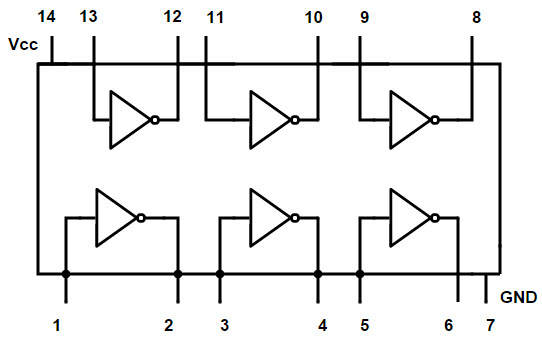The triangle is an inverter, as it has the little circle on the output. A
4007++ 4069 or 7404 IC has six of these in the one package - and looks like this:

You see the Vcc and GND pins for the whole package, which powers all six inverters.
These power pins are often omitted in the body of a schematic, since each of the gates can be placed in different areas of the circuit. In a full schematic, they can appear off to one side in a little symbol which appears to be nowhere special and doing nothing at all. The trick is to understand how things are labelled.
Let's say you had a
4007++ 4069 IC in a circuit and the chip was labelled IC3. Each of the six triangular symbols are then placed on the schematic (and they could be all over the place) but they will be labelled IC3a, IC3b, IC3c, IC3d, IC3e and IC3f - showing they are all in the single package. There
will may** also be the abovementioned symbol off to one side labelled IC3 which will only have the Vcc and GND pins shown.
Once you get the hang of it, this convention makes reading schematics a whole lot easier.
** EDIT: Where a circuit is powered from a single supply that is compatible with the IC, this might not be included - but, even so, these pins will need to be connected to power and ground.
++ EDIT 2:
